
More of the Music of Joe Jackson
Reviews and Commentaries for the Music of Joe Jackson
This commentary was written many years ago. We had a Hot Stamper Section back then, because we were selling lots of other kinds of records including Direct-to-Disc Recordings, Heavy Vinyl, Half-Speeds, OJC’s and various and sundry other kinds of vinyl which we thought would appeal to those in search of audiophile quality pressings.
In 2011, we stopped selling anything but records we had cleaned, evaluated for sound and found to be superior.
We do a lot of MoFi bashing here at Better Records, and for good reason: most of their pressings are just plain awful. We are shocked and frankly dismayed to find that the modern day audiophile still flocks to this label with the expectation of a higher quality LP, seemingly unaware that although the vinyl may be quiet, the mastering — the sound of the music as opposed to the sound of the record’s surfaces — typically leaves much to be desired.
Hence the commentary below, prompted by a letter from our good friend Roger, who owned the MoFi Night and Day and who had also purchased a Hot Stamper from us, which we are happy to say he found much more to his liking.
In my response, after a bit of piling on for the MoFi, I then turned my attention to three Nautilus records which I had previously held in high regard, but now find deserving of a critical beatdown. This one is entitled:
The Sound Is Pretty, All Right — Pretty Boring
(Note that the underlining below has been added by us.)
Hi, Tom:
Just a quick note to let you know I listened to your Joe Jackson Night and Day hot stamper LP. I don’t think I have listened to this record for at least 15 years and forgot how much Joe Jackson was on top of his game then. Great record. And it is aptly named as there is a night-and-day difference in sound between it and the Mobile Fidelity half-speed version I have. I was surprised at how bland and undynamic the MoFi was compared to the hot stamper version. Did MFSL ever listen to this title? What did they compare it to, an 8-track tape version, maybe?
The hot stamper was far more dynamic, warm, punchy, and detailed than the MoFi. The piano had a lot more weight and stood apart in the mix. In fact, I could hear all the instruments stand out in the mix a lot more with the HS version. The MoFi sounded like many, but not all, typical MFSL pressings. The very low bass was raised in the mix as was the extreme treble, like it was equalized, but there was a lot less bass and the treble was recessed and sounded more like a can of spray mist being actuated.
I was surprised at how the music came alive with the HS pressing instead of the blah MFSL. Great job on picking this one. I will be keeping both pressings of this record: the MFSL for its collectability and my ability to sell it for big bucks to some bozo who won’t know the difference, and the HS version, the one I will actually listen to.
Roger
A Good Record Doesn’t Just Sit Around
Roger, I have to think that eventually there will come a day when audiophiles will catch on to the fact that most Half-Speeds are a crock, with exactly the kind of pretty but lifeless and oh-so-boring sound that you describe. But it hasn’t happened yet, so maybe that MoFi you are keeping will go up in value. But if I were you, I’d sell it while there’s still a market for bad audiophile records.
I can also tell you that it feels good to get bad records out of your collection. It’s so much more satisfying to have a wall full of good records you know to be good rather than just a wall full of records. And as you say, it’s been 15 years since you played that NIght and Day. A good record doesn’t sit around for 15 years; a good record gets played!
But you owned the MoFi, exactly the kind of record that is easily forgotten.
Three of the Best, Or So We Thought
I just did shootouts with three of the best Nautilus Half-Speeds: Dreamboat Annie, Ghost In The Machine and Time Loves A Hero. None of them sound like the real thing, and especially disappointing was one of my former favorites, the Little Feat album. On the title track the Nautilus is amazingly transparent and sweet sounding. There are no real dynamics or bass on that track, so the “pretty” half-speed does what it does best and shines. But all the other tracks suck in exactly the same way Night and Day does. Cutting the balls off Little Feat is not my idea of hi-fidelity.
My rave for NR 24 is still on the site. Just goes to show how easy it is to be wrong. But it’s never too late to learn. We put audiophile beaters up for sale every week. Each and every one of them is a lesson on what makes one record sound better than another. If you want a wall full of good sounding records, we can help you make it happen. In fact it will be our pleasure. Down with audiophile junk and up with Better Records.
A Failed Technology
The point of this commentary is simply this: if half-speed mastering is a technology designed to improve the sound of records, it has to be recognized for what it is: a complete and utter failure.
There is almost always a non-half-speed-mastered pressing that will be superior to the half-speed. The only exceptions to that rule will be those LPs whose real-time mastering was poor to start with. This is as it should be. You can beat a bad record with a half-speed, but you sure can’t beat a good one. We prove it every week here at Better Records.
Take a look in the Hot Stamper Section and you will find dozens of records that are dramatically better sounding than any half-speed ever made. We built our reputation and practically our entire business on that simple idea. Furthermore, our philosophy is backed up by our commitment to you, the customer. We are happy to refund your money if you don’t see things our way.
We’re confident that you, like Roger here, will have no trouble recognizing the faults of the half-speed when The Real Thing comes along. We’re sure you’ll agree with us that The True Audiophile Pressing is simply the one that sounds better. And to that we say bring it on — the next shootout is about to begin.
A Confession
It’s true: We were impressed with many of the better Heavy Vinyl pressings even as recently as the early 2000s.
If we’d never made the progress we’ve worked so hard to make over the course of the last twenty or more years, perhaps we would find more merit in the Heavy Vinyl reissues so many audiophiles seem to revere.
We’ll never know of course; that’s a bell that can be unrung. We did the work, we can’t undo it, and the system that resulted from it is merciless in revealing the strengths and weaknesses of all the records we play. That system makes clear to us that these newer pressings are second-rate at best and much more often than not third-rate and even worse.
Some audiophile records sound so bad, I was pissed off enough to create a unique circle of vinyl hell to put them in.
Setting higher standards — no, being able to set higher standards — in our minds is a clear mark of progress. Judging by the hundreds of letters we’ve received, especially the ones comparing our records to their Heavy Vinyl and Half-Speed mastered counterparts, we know that our customers are hearing things the same way we do.
Further Reading
 To us, it is very much a problem. Bad bass is just plain annoying.
To us, it is very much a problem. Bad bass is just plain annoying. 
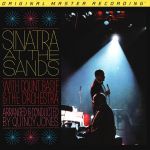


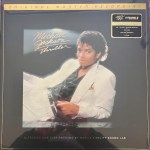 More of the Music of Michael Jackson
More of the Music of Michael Jackson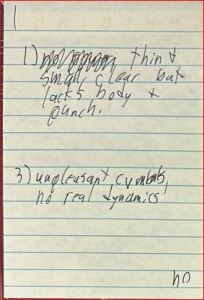 Side One:
Side One: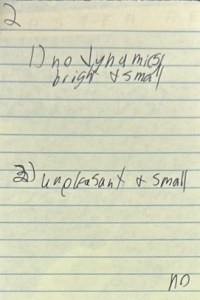


 Tea for the Tillerman on UHQR
Tea for the Tillerman on UHQR

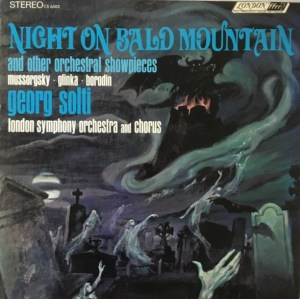
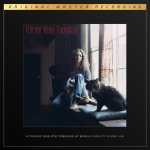
 How shocking is it that the most colored label in the history of audio produced a record with no colorations, one that sounds like a bad CD. I would not have predicted the possibility!
How shocking is it that the most colored label in the history of audio produced a record with no colorations, one that sounds like a bad CD. I would not have predicted the possibility!